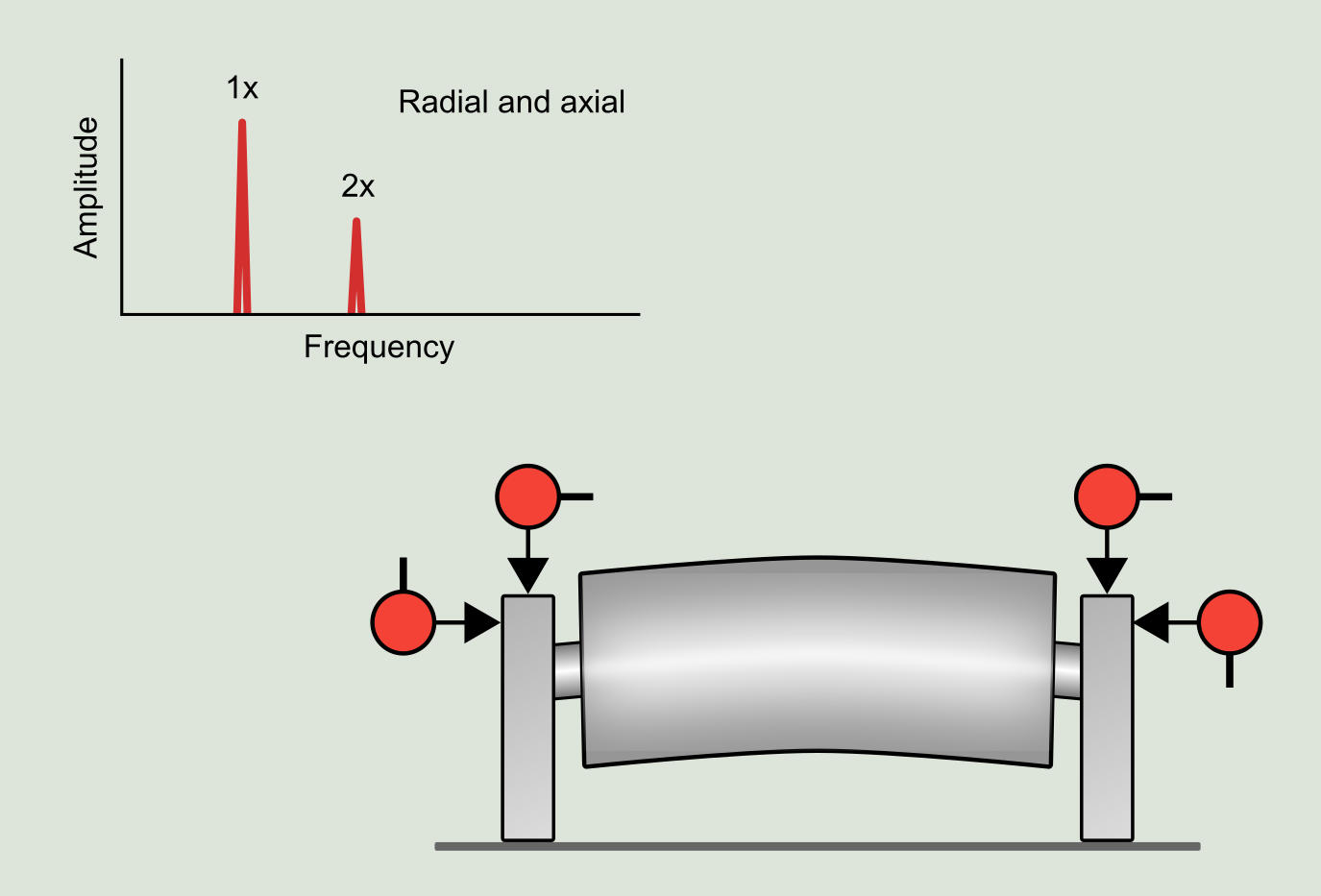A rotor is considered bent when it loses its symmetry with respect to its rotating axis. The bent can have its origin in thermal growth or radial and axial overload. A bent shaft manifests in the spectrum at the shaft rotating frequency. However unlike the unbalance, a significant axial vibration will be measured, with a frequency spectrum featuring a second harmonic, accompanying the first harmonic of the rotating speed. If you try to balance the rotor, a large correction weight is tipically necessary.

The presence of axial vibration is not exclusive to a bent shaft, but is also found in overhung rotor unbalance and in coupling or bearing misalignment. The parameter that helps us in giving a more accurate diagnosis, as in many other cases, is the phase.
It is necessary to take readings in the axial direction on both bearings. A phase shift of 180°, indicates that the shaft is bent. On the other hand, in most cases of bent shafts, the phase readings in the horizontal and vertical directions of both bearings are of equal value.
